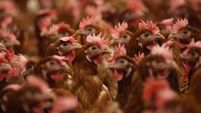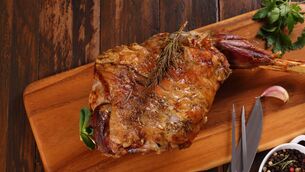Grass takes off: It happens every year

It’s amazing how quickly grass growth takes off, when temperatures rise.
Late May and into early June is silly season for grass management. You must walk your farm twice per week to watch growth, so you can make well informed management decisions.
It’s amazing that farmers don’t trust their farm enough. What I mean by this is that the farm grows a lot of grass each year, but farmers are almost shocked when it happens again each year.
It is not surprising how quickly grass surpluses have occurred this year, because most farmers have plenty of nitrogen out, trying to boost growth. Much of it was just sitting there, ready for take-off once conditions improved.
Many have reported growth rates in excess of 100 Kg of dry matter per hectare over the last week.
Grass growth
I walked several farms earlier this week, and all of them are now running a large grass surplus on the grazing platform. One paddock I looked at was grazed last Sunday week, and had over 900kg of cover this Monday already, only nine days of growth.
If that growth rate continues, that paddock should be grazed again after 14 days, for best grass quality.
The common question on all these farms is how much grass should you take out and bale?
As a very basic rule of thumb, you need at this time of year between nine and 10 days of grass ahead of you.
The major issue for most is that, during the recent dry weather, growth was poor, and a lot of paddocks had very similar covers when growth improved.
This has resulted in a large number of paddocks having the same or very similar covers. But you can’t graze them all on the one day.
Ground conditions excellent
For most farmers, ground conditions are now perfect. For some, the recent rain was essential because ground had got very hard and was starting to crack. Some are still experiencing a moisture deficit.
Covers that are too strong
With grass flying out of the ground, now is the opportunity to build silage stocks for next winter rather than waste strong swards.
Grass has headed out, particularly in the last 10 days, and requires very careful management. Try to bale surplus paddocks as soon as they are identified, so that they can come back into the rotation next time round.
Resist the temptation to skip paddocks and not bale them until you have several to bale. That leaves too many paddocks ready to graze at the same time again, meaning that only some of them will contain appropriate grass for good animal performance.
What are the consequences of grazing excessively high covers?
Animals forced to graze high covers will have lower intakes, because they become more selective about what they graze.
They will first graze the leaf at the top of the sward, and it’s only when you force stock that they will graze the stem at the base which has poorer feed value.
High covers have more stem which means they have lower energy per kg of dry matter.
Paddocks not grazed out properly will produce poorer swards for the remainder of the grazing season.
Animals will perform poorly on grass with a high stem percentage.
A great rule for grazing is: if the field is yellow when stock finish grazing it, they should never have been asked to graze it in the first place.
Unless they are dry cows!
Grazing tips for quality
* If stock fail to graze out paddocks, you will need to top the stem and dung-pats in order for the next rotation to have quality grass.
* Take out paddocks once you have identified them as surplus, so that they re-enter the next rotation in sequence.
* Don’t skimp on nitrogen, we are now at peak grass growth, keep it growing.
What will stock eat per day?
* Beef animals of all types will consume about 2%-2.5% of their body weight in dry matter each day.
* Spring calved suckler cows and their calves need about 16 kg of dry matter from grass per day between them.
* Dry sucklers close to calving should not be given unlimited access to good quality grass; this would lead to increased calving difficulties.
A forage source such as straw or hay should be fed in a paddock with restricted grass. Don’t forget to supply a dry cow mineral.
* Weanlings/stores on grazed grass will in many cases no longer need supplementation, as long as grass quality is kept right.
If you try to get these animals to graze covers that are too strong, you will not achieve target weight gains, because the total energy intake will not suffice.












